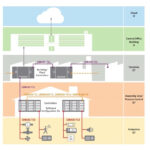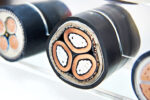There’s a variety of quantum sensors available for use as a global positioning system (GPS) replacement including quantum compasses, atomic gyroscopes, and atom interferometers. Several options for a quantum GPS replacement, also called quantum position sensing (QPS), are being developed. Three examples include quantum active navigation that overlays and supplements existing satellite-based GPS systems, quantum […]
Featured
How to raise awareness for the necessity of carbon monoxide sensors
Public outcries for reducing carbon dioxide (CO2) emissions to reduce their climate change impact have been widely promoted for more than two decades. However, attention to a more immediate public health problem from carbon monoxide (CO) has not received anywhere near the same level of attention– unless the deaths get news covered. For example, in […]
Passive RFID finds unanticipated mass-market applications: part 2
Passive RFID tags have been widely adopted, and some applications show creative adaptation to unmet needs. While many uses for passive RFID tags were predicted and expected, innovators implemented some that were not obvious. This part will look at two of those applications. Clothing-store “mass” checkout One obvious application predicted for passive RFID labels was […]
Securing devices for the IoT – IEC 62443, SESIP, and PSA
The International Electrotechnical Commission (IEC) 62443 series of standards is focused on security for Industrial Automation and Control Systems (IACS); the Security Evaluation Standard for IoT Platforms (SESIP) provides a method for trustworthy assessment of the security IoT platforms, including the industrial IoT (IIoT), and Platform Security Architecture (PSA) certification requires strict adherence to the […]
Passive RFID finds unanticipated mass-market applications: part 1
Passive RFID tags have been widely adopted, and some applications show creative adaptation to unmet needs. It’s interesting to see how advances in technology often are adapted to applications that were not highlighted in their original “use case” scenarios and how clever people adapt or leverage new technologies in unscripted ways. A good example of […]
10BASE-T1S brings a single pair of wires to the network edge
The 802.3cg Ethernet standard uses a single pair of wires, and it manages data flow without switches, making it suitable for industrial networks at a lower cost than traditional Ethernet. Industrial plants have long used digital data to monitor and control their production facilities. Networks in factories, data centers, and commercial buildings push the edges…
Securing devices for the IoT — managing memory
Memory management is important in all digital electronic devices including devices designed for use on the Internet of Things (IoT). It supports efficient resource allocation and memory utilization and prevents memory fragmentation, improving efficiency. It also supports memory protection and device security. This FAQ briefly reviews the common weakness enumeration (CWE) scheme for identifying software […]
What’s the difference between copper and aluminum industrial cable?
Contributed by Frances Richards It’s no secret that copper and aluminum are both effective conductors of electricity. Further, most engineers and system designers know that copper is a better conductor and easier to work with, while aluminum is lighter weight and less expensive. Beyond these widely known characteristics, let’s take a closer look at the […]
Securing devices for the IoT – firmware, software, and OTA
Over-the-air (OTA) updating of firmware and software on Internet of Things (IoT) devices is a requirement, not an option. The large number of IoT devices makes manual updates impractical and even dangerous. This FAQ reviews two key tools for managing and implementing OTA for IoT devices: open-source standards for managing resource-constrained devices and industry standards […]
How is sensing used to detect glaucoma?
The term glaucoma is used to describe a group of eye diseases. In addition to damaging the eye’s optic nerve, glaucoma can result in vision loss and even blindness. About 3 million Americans have glaucoma, but the disease affects more than 67 million people worldwide and is the second leading cause of blindness. Glaucoma occurs […]











